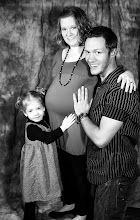Jesus, our Good Shepherd,Was born for me and you!
We made these candy canes by puttingand a golf ball and then we had a shakingparty! :)(marble painting but rather then a marble
Description: The first book in The Reading Game learn-to-read series tells the story of a skunk without a stripe who is rejected by the other skunks but finds acceptance among some cats and becomes their defender. It’s told in rhyme, is beautifully illustrated, and is 32 pages long. It will be the first book the student reads, and there are five more to follow in this groundbreaking learn to read program. Each of The Reading Game's six stories is told using just thirty new words. These are broken down into six sets of five words. The student learns to read each set of five words by playing a simple word matching game. Frequent exposure through play hard wires these words into long-term memory. Rote learning is transformed into a fast-paced game with a winner every few seconds. After completing Skunk, Game 1, the student has learned five words (can, cat, is, me, not). Playing Game 2 adds an additional five w...


Comments